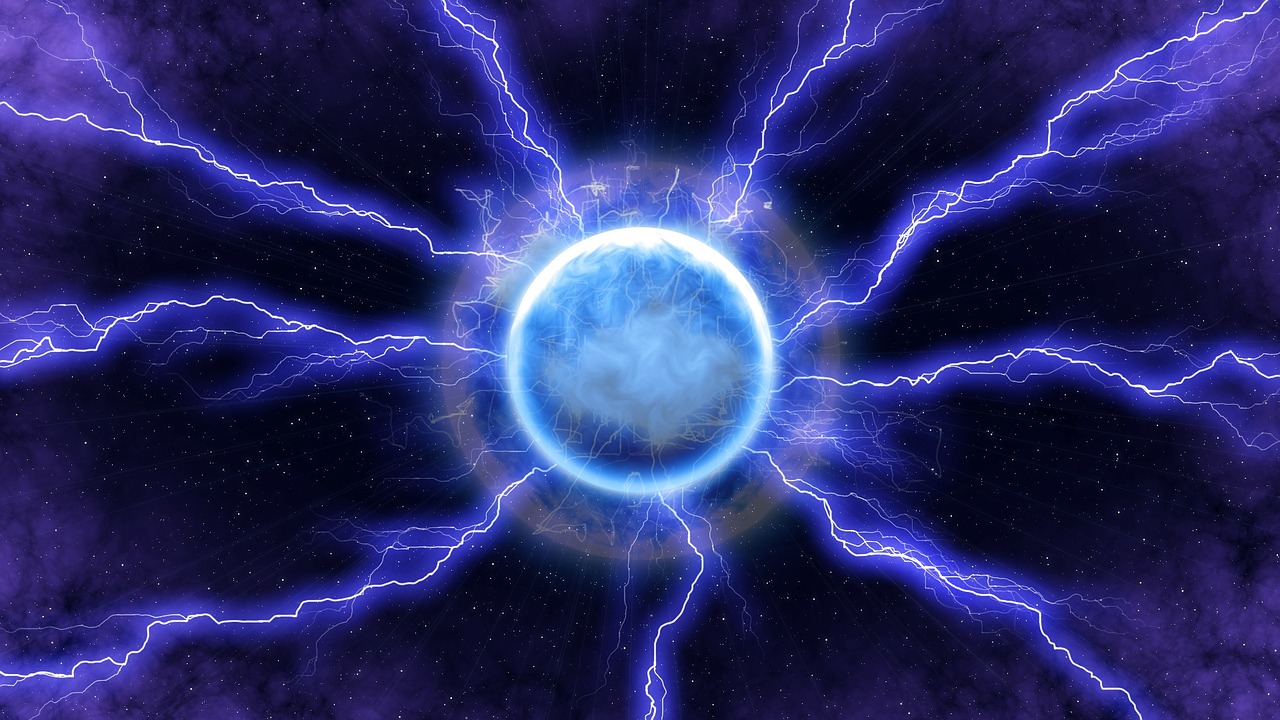By Molly Hammond
This article was originally published in The Oxford Scientist Michaelmas Term 2021 edition, Change.
Nuclear fusion is supposedly ‘always 30 years away’. It was however first theorised about a hundred years ago. What has changed in a century of research—and are we now, really, only 30 years away?
In 1920, Arthur Eddington became the first person to suggest that the source of the sun’s energy was nuclear fusion, and in 1939 his theory was proven by Hans Bethe. Ever since, the possibility of fusion as a power source has been incredibly exciting because of the vast amounts of energy the process creates; when it’s fused with tritium, one metric ton of deuterium can produce the same amount of energy as approximately 29 billion tons of coal! Still, there would be many other benefits to fusion power. For example, no greenhouse gases are produced in the process, making it especially appealing today, and fusion reactors produce significantly less radioactive waste than fission ones. It really seems like the holy grail of energy, making it no surprise that nuclear fusion has fascinated the scientific community for decades.
Largely, fusion research has been split into two categories: magnetic confinement and inertial confinement. In magnetic confinement fusion, powerful magnets are used to compress plasma until the temperatures and pressures reached are enough to overcome electrostatic repulsion and force fusion to occur. Meanwhile, in inertial confinement fusion (ICF), a small fuel pellet is heated and compressed by high-energy lasers.
The possibility of fusion as a power source has been incredibly exciting because of the vast amounts of energy the process creates; when it’s fused with tritium, one metric ton of deuterium can produce the same amount of energy as approximately 29 billion tons of coal!
Research into magnetic confinement fusion is dominated by the tokamak. First proposed in 1950, then pioneered in the USSR, this machine uses toroidal and helical magnetic fields to confine plasma in the shape of a torus. Tokamaks were more efficient and suffered from fewer instabilities than earlier magnetic confinement devices, such as magnetic bottles and Z-pinch machines: in 1968 the Soviet T-3 Tokamak claimed to reach temperatures over an order of magnitude higher than any other device, and these results were confirmed by a UK team nicknamed “The Culham Five” the next year. From this point onwards, tokamak research exploded and countries across the world built their own, including JET here in the UK, which broke the Q factor record in 1997 with Q=0.67. The Q factor is the ratio of energy released from the plasma to energy put into the plasma and is a popular measure of how successful a fusion experiment has been. It does not however include any of the energy losses experienced by the machine, or energy used to power other subsystems. This distinction is often overlooked in popular science writing and can make energy break-even seem a lot closer than it is, contributing to the disconnect between expectations and actual progress in the field.
The other fusion approach is ICF, which was proposed by John Nuckolls in 1960. Lasers, which were patented the same year, appeared to be the best option for compressing fuel pellets and have been used in nearly every ICF attempt to date. In 1965, the Lawrence Livermore National Laboratory (LLNL) developed the 12-beam “4 Pi laser”, which delivered energy to the target in five nanosecond pulses. They didn’t achieve fusion, as the pulse duration was too long, but they still got to study ion emission and plasma temperatures from the target. A few years later on 1 May 1974, a different group at KMS Fusion became the first to achieve inertial confinement fusion. Unfortunately, poor company leadership and government funding cuts meant that this company, who were the only private company to ever participate in ICF research, shut down in 1990. Since the 1990s, the LLNL has been the leader in the ICF field, inching closer and closer to fusion energy gain. Just this August, preliminary results suggested that their array of 192 high power lasers at the National Ignition Facility reached a record-breaking Q factor of 0.7, and that they are on the brink of reaching ignition. This is a crucial milestone because ignition is the point at which energy from a controlled fusion reaction becomes greater than losses from the plasma—paving the way to overall break-even.
“Fusion seems closer than ever before, and I am confident that we’ll see a lot of exciting advancements in the next few years.“
Molly Hammond
So, what’s next for the field? Most anticipated is the International Thermonuclear Experimental Reactor (ITER). This is a massive collaboration between 35 countries, aiming to build the largest tokamak ever. Designed to have a Q factor of 10 and to produce 500 MW of power, it could smash fusion records. Importantly, ITER will also be testing a lot of the technologies that we will need to have fusion as a viable energy source, such as testing tritium breeding from the reactor vessel itself, as the world’s current tritium supply will not be sufficient to meet the fuel needs of future power plants. This project will make way for DEMO, a test reactor based on all ITER’s technologies, but even bigger and equipped to produce electricity.
Now, for the big question. Will we see fusion power in the next 30 years? I won’t give you a solid answer, but what I will say is that this field has made massive strides over the years. The amount of fusion achieved by prototypes has increased by a factor of 104—similar to the growth rate of the number of transistors on a chip! The main problem with the perception of fusion research is that until the first reactor is constructed, no one will think we’ve gotten anywhere. Fusion seems closer than ever before, and I am confident that we’ll see a lot of exciting advancements in the next few years.





